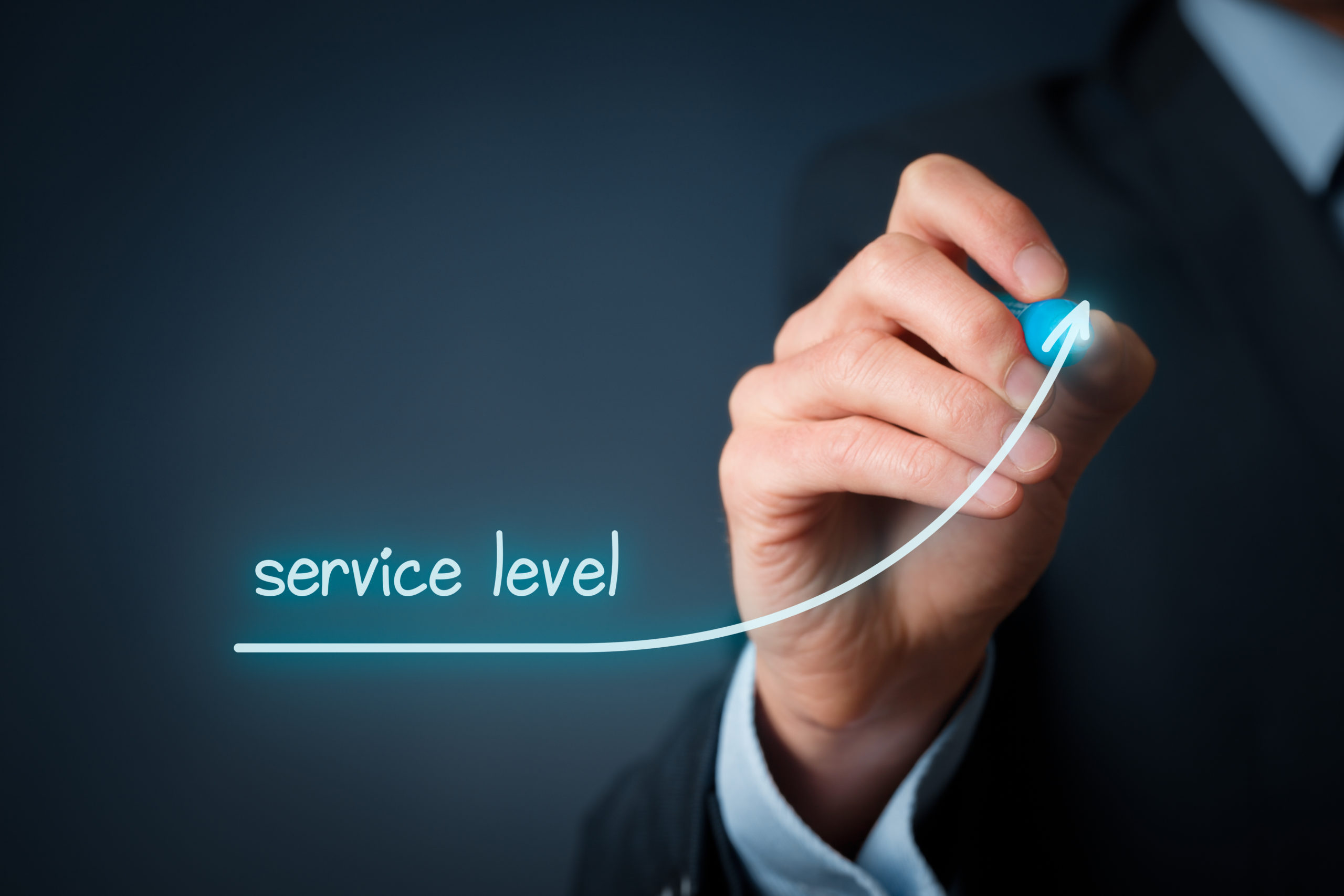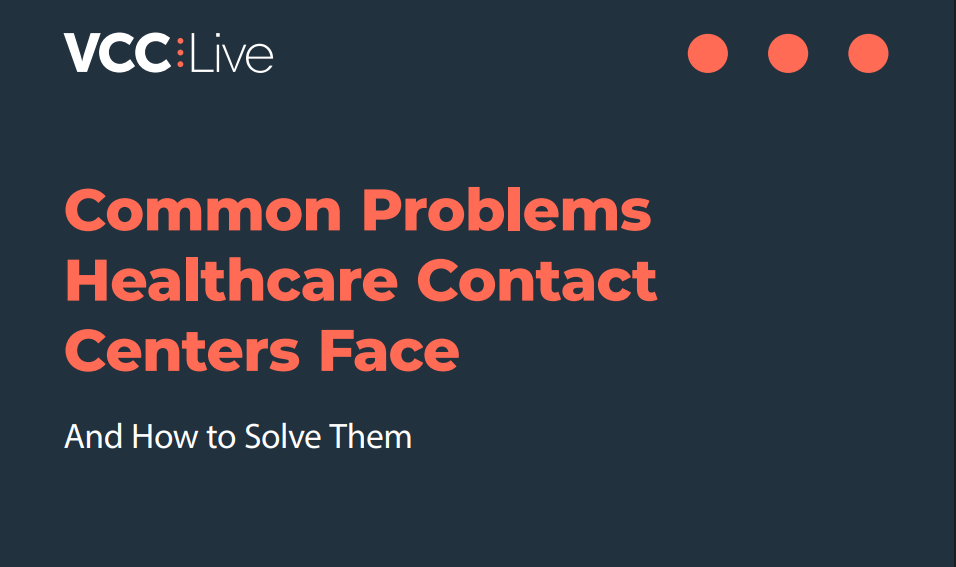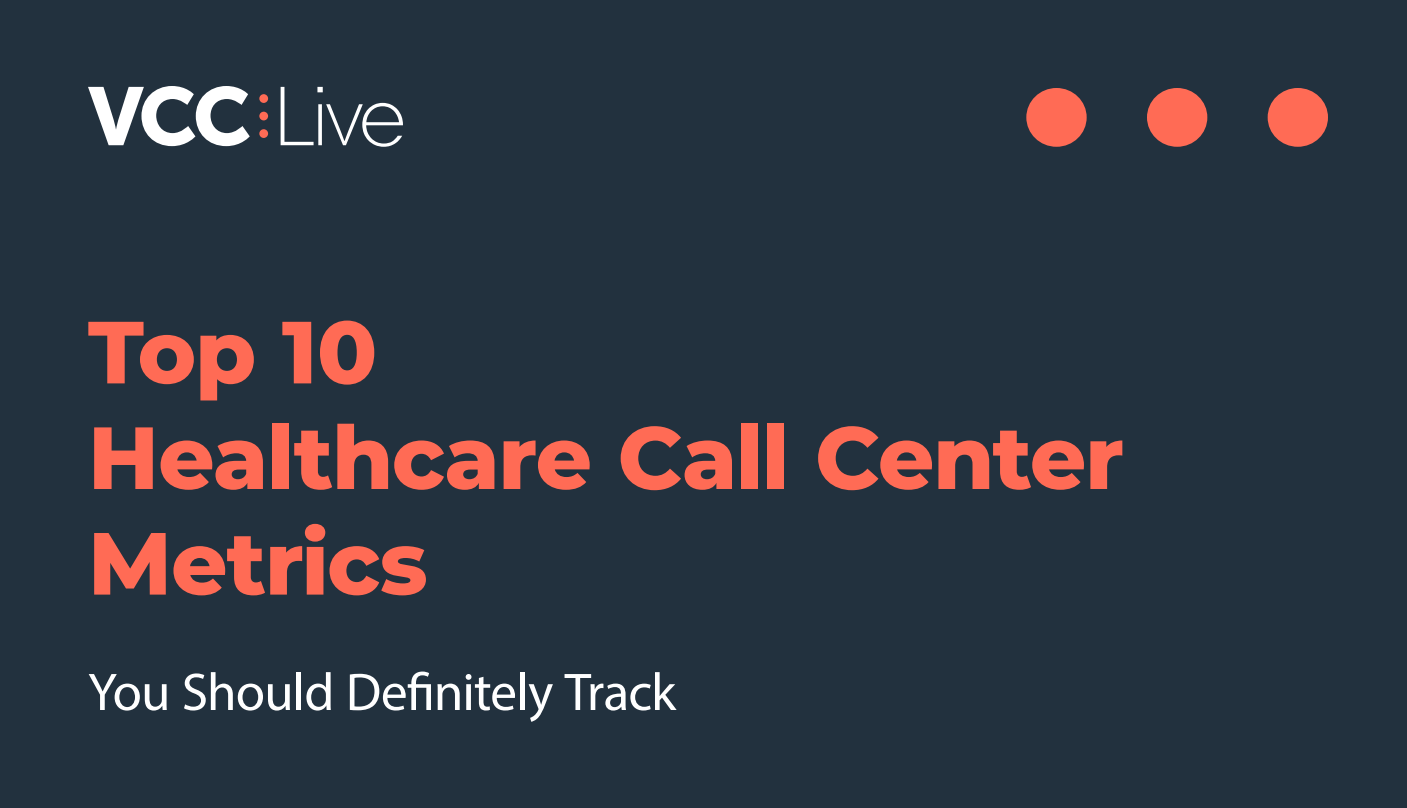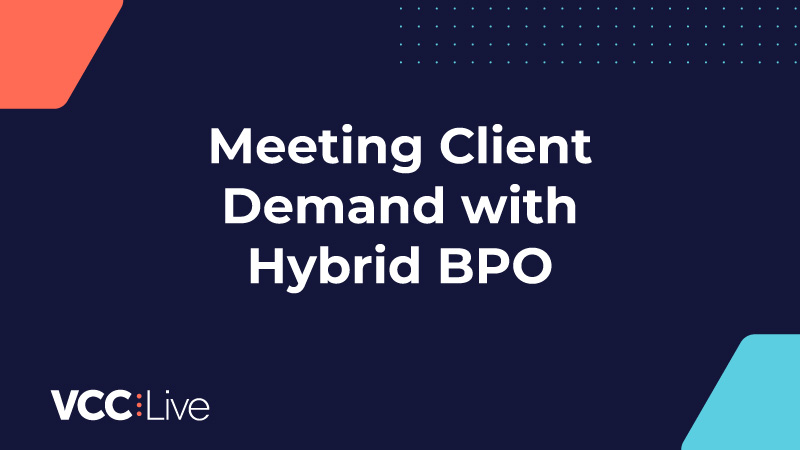Call center service level is defined as the percentage of calls answered and abandoned within a predefined amount of time—target time threshold. It can be measured over any period of time and for each agent, group, campaign or the contact center as a whole.
Service level is one of the most important Key Performance Indicators (KPIs) for call centers as it helps measure customer tendencies, call center efficiency and the call center business model, comparing value per interaction, customer retention value and staffing costs.
VCC Live report fields show statistics for all calls:
- Handled calls within SL threshold
- Early disconnects – default is 5 seconds
- Repeated call count – same customer
- Total calls in queue
- Calls answered within threshold
- Calls answered after threshold
- IVR disconnects include amount and %
- Abandoned within threshold
- Abandoned after threshold
- IVR interaction and queue averages
- Dashboard alerts showing calls in queue exceeding the service level in real time
More information: VCC Live Report Fields
CX Technologies Improving Call Center Service Level
Research suggests that it is traditional for call centers to target the typical service level of answering 80% of calls within 20 seconds. With recent years’ tech advances, however, more and more technologies appear on the market, allowing call centers to improve their service level, efficiency and overall CX.
Intelligent Routing
Leveraging customer data is one important way to improve your Service Level. As callers have a different profile, it is now possible for call centers to segment and prioritize customers based on the data available in their CRM. Based on the callers’ CLI or IVR session, for example, the associated account in the CRM is identified with an established priority level. This priority level considers ever changing criteria such as a contract expiration date, current balance or something else. Intelligent Routing will transfer selected callers to a priority ACD group. The effect is to increase the average value per interaction.
Average Handling Time
AHT (Average Handling Time) combines hold time (queue), talk time and after call time. Each contact centre needs to focus on all 3 elements in order to improve their AHT.
AHT= Total Talk Time + Total Hold Time + After Call Time/ Number of calls made
With modern CX technologies, you can use several techniques, which will help you improve your AHT:
- Smooth out call spikes
- Integrate CTI with your CRM
- Leverage improved call scripting
- Score agent interactions
- Send the customer to the most appropriate agent (a skilled-based agent or a priority agent that is more prepared in handling escalated issues)
- Limit after work time by applying hard limits and a soft limit alert
Callbacks
In telephony we often refer to peak hour traffic, those 5 hours during the day that account for the majority of the traffic. These peaks, however, are not constant but rather have an element of being stochastic, a random peak or in some situations, a non-random peak event.
You can use erlang formulas to predict resources required (telephony and staff) to handle peak hour traffic but these calculations do not consider recent CX technologies, as mentioned previously in this article. The Erlang measurement also treat all customers and their handling equal even though CTI is more dynamic.
An interesting customer tendency shows that up to 75% of callers would prefer a callback rather than waiting in a queue for an unknown duration. Also, leveraging callback technology is beneficial for your call center as well: when you keep a caller in the queue a channel is occupied for the entire time. It’s often a toll-free 800 number billed at a premium per-minute rate.
However, by offering a callback to customers, you can free up your channels while also reducing your queue time by spreading out your call traffic and having your CSR more prepared for the upcoming interaction.
More information here: Erlang Formulas
Proactive initiatives
In a callback interaction the customers are often advised to wait let’s say 24 hours for an update. To avoid jamming your call center with follow up calls, being proactive over different channels can reduce your inbound traffic.
If the ticket status has not changed or in fact if it has changed, isn’t it preferred to be proactive and to update the customer before they call in? Some channels that can be used for proactive initiatives are SMS, email, outbound IVR and interactive chatbot.
Call deflection
Routing customers to different channels is a common practice for call center to boost efficiency. Call deflection is one technique of rerouting customer calls to an alternative channel. If it’s done right, call deflection can be an effective way to reduce costs by moving customers to lower cost ‘digital’ channels.
Customers, for instance, often find voice channels frustrating due to long hold times. In such cases, deflect calls and offer customers the possibility to resolve their query via a self-service channel might improve the overall customer experience. Also, deflect inbound callers to an interactive message that updates a ticket status using text to speech can reduce unnecessary agent interactions.
Finding that balance between a better CX and less operating costs can be achieved by making your call center service level more efficient by evaluating tendencies and implementing a better call flow, supported by technology initiatives.



















